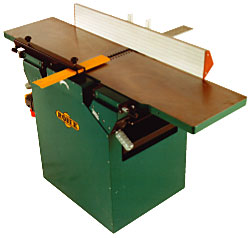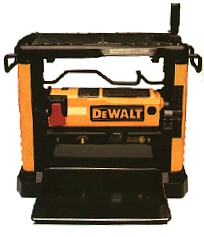
I just cannot get through my thick head the difference between a jointer and a planer. I am on a limited budget so I cannot at this time afford both. I only work with pine at this point, which as you know, is often bowed or otherwise warped…enough to see the curvature. So…do I want a jointer or a planer to correct this?
Michael Dresdner: In simple terms, a jointer is a motorized hand plane turned upside down. It does exactly what a hand plane does, except that you move the wood across it instead of moving it across the wood. A jointer creates a flat surface on wood, and yes, it can be used to correct bow and warp on one side of a board at a time.

A planer is a thicknesser. It takes a thick board and makes it thinner. To use a planer, the board should already have one flat side. That smooth side goes down onto the bed, and the thicknesser (planer) cuts slices off the top (unsmoothed) side. In other words, you put a board into the planer to make it thinner after you have already established one flat side using the jointer (or a hand plane.) At the same time, the planer will also make the rough side both smooth, and parallel to the other side.
Which do you want? That depends on your hand tool skills and your level of energy. If you are skilled enough to flatten boards first with a hand plane, you could make do with just a planer, which is what I do. Of course, if you are really good with a hand plane and very energetic, you can use it to eliminate both tools. Bear in mind that power tools simply do what an equivalent hand tool does, but they use a motor to make the job go faster and easier.





